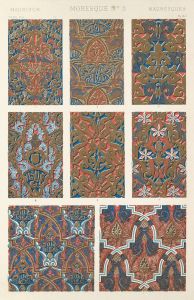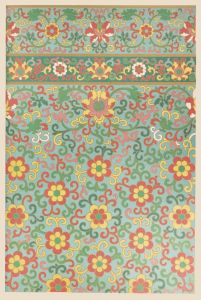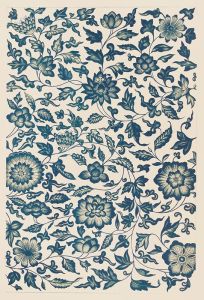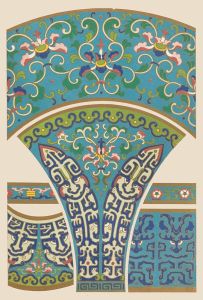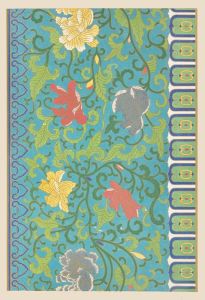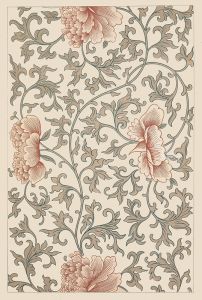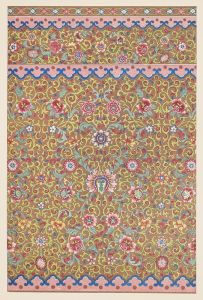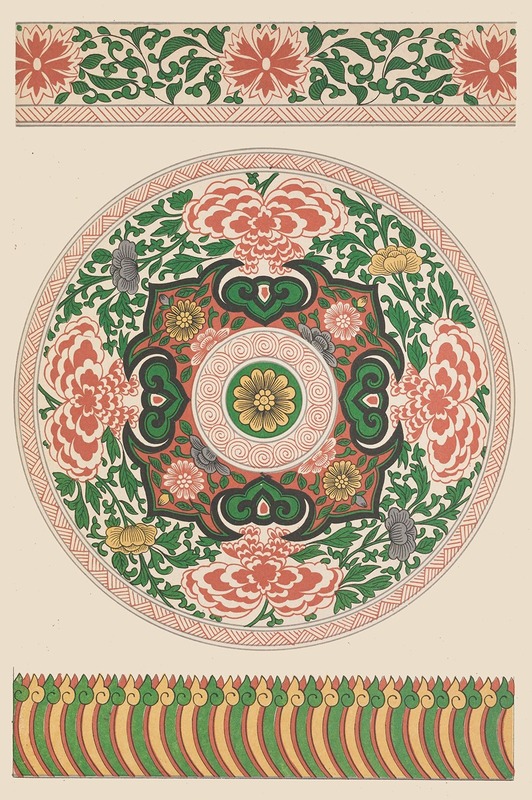
Examples of Chinese ornament, Pl.62
A hand-painted replica of Owen Jones’s masterpiece Examples of Chinese ornament, Pl.62, meticulously crafted by professional artists to capture the true essence of the original. Each piece is created with museum-quality canvas and rare mineral pigments, carefully painted by experienced artists with delicate brushstrokes and rich, layered colors to perfectly recreate the texture of the original artwork. Unlike machine-printed reproductions, this hand-painted version brings the painting to life, infused with the artist’s emotions and skill in every stroke. Whether for personal collection or home decoration, it instantly elevates the artistic atmosphere of any space.
"Examples of Chinese Ornament, Pl.62" is a work by Owen Jones, a prominent British architect and designer known for his contributions to the decorative arts in the 19th century. This particular piece is part of his influential publication, "The Grammar of Ornament," which was first published in 1856. The book is a comprehensive collection of design patterns and motifs from various cultures around the world, aiming to serve as a source of inspiration and a reference for designers and architects.
Owen Jones was a key figure in the development of design theory during the Victorian era. He was deeply interested in the principles of design and how they could be applied across different cultures and time periods. "The Grammar of Ornament" reflects his belief in the universality of design principles and his appreciation for the aesthetic value of non-Western art forms. The book is divided into several chapters, each focusing on a different culture or style, including Egyptian, Persian, Greek, Roman, and Chinese, among others.
Plate 62, specifically, showcases examples of Chinese ornamentation. Chinese art and design have a long and rich history, characterized by intricate patterns, symbolic motifs, and a deep connection to cultural and philosophical concepts. In his work, Jones sought to capture the essence of Chinese decorative arts, highlighting their unique qualities and the principles underlying their beauty.
The Chinese ornaments depicted in Plate 62 are likely to include traditional motifs such as floral patterns, geometric shapes, and symbolic imagery like dragons, phoenixes, and other mythical creatures. These elements are often found in Chinese textiles, ceramics, architecture, and other forms of decorative art. The use of color, symmetry, and balance are important aspects of Chinese design, and Jones would have aimed to represent these features accurately in his illustrations.
Jones's work was not just about aesthetic appreciation; it also had an educational purpose. By documenting and analyzing the design elements of various cultures, he hoped to promote a greater understanding and respect for the diversity of artistic expression. His work encouraged designers to look beyond their own cultural boundaries and to incorporate a wider range of influences into their work.
"The Grammar of Ornament" has had a lasting impact on the field of design. It was one of the first attempts to systematically categorize and compare decorative styles from around the world, and it remains a valuable resource for designers, historians, and scholars. Owen Jones's emphasis on the importance of understanding and respecting different cultural traditions in design continues to resonate in contemporary discussions about globalization and cultural exchange in the arts.
In summary, "Examples of Chinese Ornament, Pl.62" by Owen Jones is a representation of Chinese decorative art as part of his broader effort to document and analyze the design principles of various cultures. Through this work, Jones not only celebrated the beauty of Chinese art but also contributed to a greater appreciation and understanding of global design traditions.








